France Rejects Iran’s Claims That Detained Citizens Are Spies

France's Foreign Ministry has reacted to a video of forced confessions of two French nationals detained in Iran, accusing Tehran of the practices of "worst dictatorial regimes".

France's Foreign Ministry has reacted to a video of forced confessions of two French nationals detained in Iran, accusing Tehran of the practices of "worst dictatorial regimes".

Authorities in Iran have again resorted to airing forced confessions of family members to dodge responsibility in the suspicious death of a teenage protester.
The 16-year-old Nika Shakarami’s body was found ten days after she left home to take part in an anti-government protest on September 20. The last time she spoke to anyone she was running away from security forces chasing her on motorbikes.
Activists had warned Wednesday on social media that Nika’s family were under pressure to say she had committed suicide. Later in the evening, the state-run television’s infamous 8:30 news bulletin aired short excerpt of so-called “confessions” of Nika’s uncle and aunt as proof that she had committed suicide and security forces had no role in her death as many in Iran say.
Nika’s aunt and uncle were arrested a few days ago after publicizing her suspicious death on social media.
The program has aired forced ‘confessions’ of imprisoned activists, politicians, and social media celebrities many times, often using such ‘confessions’ as proof that dissent in Iran is only the result of foreign plots as the country’s Supreme Leader Ali Khamenei says in almost every public speech.
Many on social media have accused the IRIB program of pushing a script written by security forces and pointed out various discrepancies in the story as it was told by the authorities.
They have pointed out that Nika was wearing dark trainers in a photo released by the authorities of her body on the ground in the backyard of a house after “falling from a height”.
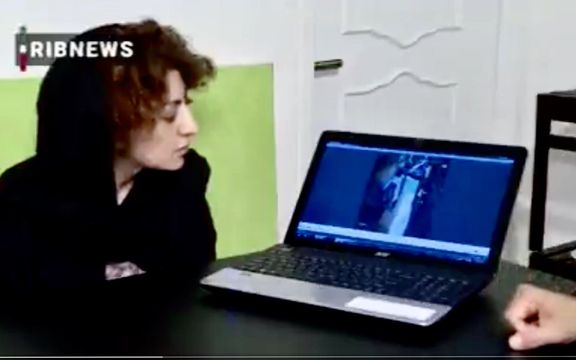
In CCTV footage shown in the same program the woman they say is Nika entering the same building a few hours before her death is wearing white trainers. The program shows a man, apparently an interrogator, who indicates the woman entering the building on a laptop screen with his finger and asking who she is. “Nika,” the clearly distressed aunt, Atash Shakarami, replies without further comment.
The program also shows Nika’s uncle, Mohsen Shakarami, saying the family would follow the case through legal channels and did not approve of any “violent moves that cause damage to public property.”
Social media users have pointed out that in the video shown by IRIB the shadow of a man is seen on the wall behind Nika’s uncle while he is speaking, whispering something to him, apparently instructing him what to say.
On Thursday the official news agency (IRNA) released a video showing two French citizens, Cecile Kohler and her partner Jacque Paris, who were arrested in May on charges of espionage. IRNA called the French couple who are unionists associated with France’s National Federation of Education, Culture and Vocational Training “intelligence officers who came to Iran with bags of money”. The IRNA report did not say when the video was made.
In one of the scenes in the video Kohler describes herself as an “intelligence and operation agent of French foreign security service” saying she and her partner had come to Iran to fund strikes and antigovernment protests.
In reaction to forced confessions of its citizens, France's Foreign Ministry accused Iran Thursday of the practices of "worst dictatorial regimes". The ministry categorically denied that its citizens were intelligence agents, saying it will do its utmost to secure their release.
In a tweet Thursday Abdollah Ganji, the former editor of the IRGC-linked Javan newspaper who is now chief editor of Tehran municipality’s Hamshahri newspaper, claimed that Nika’s death was not related to the protests and merely a “coincidence” which protesters are using as a “spare fuel tank for the riots”.
A political analyst who asked not to be named, told Iran International, “What matters in this case, irrespective of who is telling the truth, is that nobody is convinced by what the authorities say because nobody trusts the system. People will believe the exact opposite of what the government says,” and added “Even the authorities know that everything is collapsing.”

The European Parliament on Thursday called on the European Union for additional sanctions on the Islamic Republic over its bloody clampdown of protests.
The European Parliament on Thursday adopted a resolution that condemns the death of Mahsa Amini at the hands of Iran's morality police in September and asked for EU sanctions against her killers and those involved in quashing ensuing street protests.
The resolution calls for an "impartial and independent" probe into Mahsa's ill-treatment and killing, and "strongly condemns widespread and disproportionate use of force by Iranian security forces against the crowds which has so far resulted in many casualties." Parliament further called on the United Nations, and in particular its Human Rights Council, to initiate an investigation into recent events in Iran.
EU foreign policy chief Josep Borrell told reporters in Prague on Thursday that EU foreign ministers will discuss further sanctions on Iran at their next meeting. The EU foreign ministers are set to convene on October 17.
In a tweet, Borrell said he spoke with Iran’s Foreign Minister Hossein Amir-Abdollahian, asking for accountability for the death of Amini. He added that he also called on Tehran “to stop violence against demonstrators and to release those detained.” The EU foreign policy chief said he also urged Iran to cooperate with the UN nuclear watchdog.
Borrell underlined that the “right to protest and free flow of information must be allowed," adding that “EU is considering all options.”
A German foreign ministry source said October 3, that Germany, France, Denmark, Spain, Italy and the Czech Republic have submitted 16 proposals for new measures by the European Union against Iran. "We are now working flat out to implement these proposals," the source added.

A regime insider's account of police brutality as he experienced in the streets of Tehran, October 4, reached Supreme Leader’s office, and proved critics right.
Some also used his account to argue that the killings of young women like Mahsa Amini, who was fatally injured in “morality police” custody, and Nika Shakarami, a 16-year-old girl who was taken during the protests in Tehran and found dead ten days later with evidence of torture, are entirely possible at the hands of brutal security forces.
Javad Moguei, a hardliner filmmaker whose career could be summarized as trumpeting the Islamic Republic's ideology, wrote about what happened to him in a long Instagram post which has disappeared from his page, however, screenshots of his post, as well as a copy of it posted on Telegram on the account of the reformist Saham News, are still available on social media.
Moguei starts his story with his visit to the Enghelab (Revolution) Square where he went with his friends to buy some books. "At the Revolution Square the number of Basij militia, special riot troops, the police and the IRGC's plainclothes officers were several times more than the people who were walking on the sidewalks in the busy roundabout," Mogui remembered.
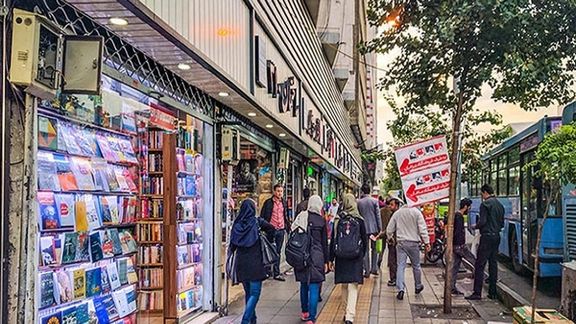
While shopping for books, his friend Ali told him how the Basij was beating and sexually insulting young girls in the streets during the past 10 days. His other friend Mehdi told him that this is the Basij's usual practice during every round of unrest.
"At the Quds intersection [about half a mile from the square] I head a girl screaming. A police officer threw him in an open gutter in the street and several Basij members started to beat the girl who weighed less than 60 Kilograms. I rushed to the scene and shouted at them: Don't beat her! She will die," Moguei remembered, adding, "They told me it was none of my business. And then they shot me in the hand and chest with shotgun [birdshots], and I fell on the ground."
Moguei added: "A motorcyclist offered to take me out of the scene and warned that the forces may take me away. I told a Basij militiaman once again not to beat the girl as she might die. Then several militia members attacked me calling me mother f**ker. I kicked him and then all of them attacked me. There were about 10 of them. Then they threw me into a minibus. Several other detainees were also on board. Then an older man came in and asked my name and I said my name."

The man must have known Moguei and his brother who is a top Basij commander in Karaj near Tehran. "He blindfolded me and told me that I should have not intervened. When they inspected my phone and saw the picture of a well-known IRGC martyr on my screen saver, they stopped what they were doing. They took me off the minibus and took me on board another van. After a while I realized that the van was circling around the area. I saw from beneath the blindfold that they were going through the same streets again and again. I had a headache as they had hit my head on the wall or kicked it," Mogui remembered.
"Then the van stopped at the Revolution Square and a man with a goatee came on board. He asked me about what had happened. I told him about the Basij who insulted my mother. He didn't quite believe me. I asked him whether he was from the IRGC or the Police? He did not answer." The man with the goatee probably recognized Moguei as a well-known hardliner who frequented Supreme Leader Ali Khamenei's headquarters. "He offered me water and even dinner. I refused to accept. I sat there blindfolded for several minutes while he apologized and handed back my phone."
A close relative of Khamenei's Chief of Staff Mohammadi Golpayegani called. Moguei's friends must have contacted Khamenei's office to tell them about his arrest. "I told him that I was still dizzy. The paramedics had arrived and the man with the goatee loudly prayed that nothing more serious had happened to me. He came to me and said my mother was like his mother and suggested that I file a complaint against the Basij the next day. It was only after the examination by paramedics that I found out I was shot 12 times. What if they hit me in the eye?"
"My friends joined me now and I insisted to go back to where I was shot to see the Basij. We went there and there were only the police. The Basij had already left. But I will go there every day hoping that I will see the attackers once again."
Moguei was lucky not to be shot in the head or in the eye. He was also lucky because the Basij did not kidnap him and took him with them to drop him at a remote place like Nika. He was luckier as his friends were well connected and could call the only place with real influence on thugs. Mogui just tasted a few drops of his favorite regime's own syrup. The rest of the population are extremely unlucky, left in the hands of those who are not accountable for what they do.
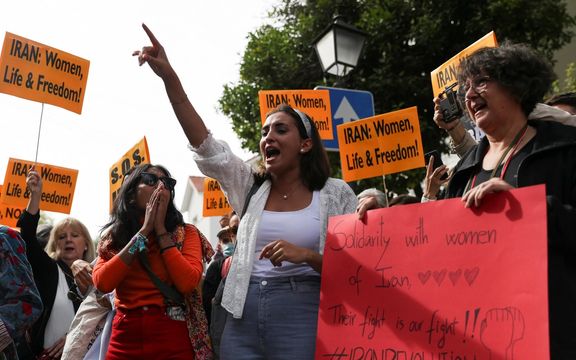
Over 100 female protesters held at Tehran’s Qarchak Prison have been systematically abused and kept in inhumane conditions since their arrest two weeks ago.
Speaking to Iran International, a source who is familiar with the prisoners’ circumstances said they have been strip searched, repeatedly interrogated, threatened by interrogators with losing their once daily two-minute phone calls to their families.
According to the source who did not want to be named for their safety, detainees have been kept indoors in unsanitary conditions throughout this time. The lights are never turned off in the shed even at night, and there are only three toilets and showers.
“Women have developed various infections as there are no facilities for washing and drying clothes and underwear … A few women found head lice in their hair,” the source said.
On Wednesday, a religious and public holiday, protesters took to the streets again in several cities including Tehran, Esfahan, and the religious city of Qom in the evening. The video from Isfahan shows people chanting “Women, Life, Liberty” while in another video a group of protesters are seen chanting “Don’t be afraid, don’t be afraid. We stand together!” in Qom.
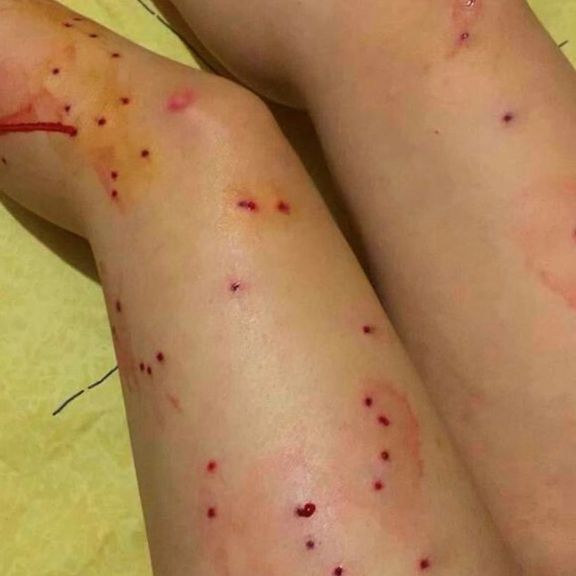
Authorities have not released any information on the number of detainees, those injured and killed in the protests that began nearly three weeks ago following the death in custody of Mahsa Amini who was arrested for not wearing her hijab “properly”.
A top Revolutionary Guards (IRGC) commander, Brigadier General Ali Fadavi, said Tuesday that detainees are around 15 years old on average while Tehran’s Public and Revolutionary Prosecutor Ali Salehi announced that 400 of those detained in the protests who “were repentant” have been released.
Iran Human Rights, a Norway-based rights organization, said Tuesday that at least 154 protesters, including nine children, have been killed by security forces during the protests.
Very little is known about most of the victims as families are pressured to remain silent if they want the bodies of their loved ones to be handed over to them.
Documentary filmmaker Javad Moguei, a hardliner and Khamenei devotee, has published a very grim account of the great violence against protesters by security forces’, IRGC’s Basij militia, and their plainclothes helpers on Instagram in the past three days.
Moguei said a police officer shot 14 plastic bullets all over his chest and arms in a matter of seconds only because he had objected to the beating of a young girl protesting on the street with no hijab.
“Don’t beat her, she will die, I cried. One of them told me to mind my own business and then my body went on fire. The officer was shooting at my chest and arms nonstop,” an apparently disillusioned Moguei who was subsequently thrown into a van and taken away wrote in one of his posts. He said he was released and officials apologized to him when he was recognized.
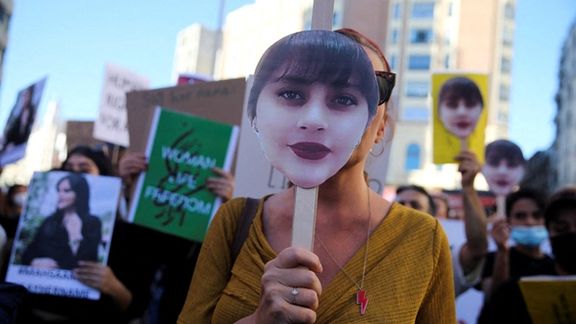
Iranian officials have been trying to question whether Mahsa Amini was killed in police custody and this attempt has reached Hezbollah leader Hassan Nasrallah.
Nasrallah, whose militant movement was created by Iran in early 1980s and has been receiving money and weapons from Iran ever since, told media in Lebanon that Amini’s death was a “vague incident”, and it was a plot to weaken the Islamic Republic and create regional tensions.
“The Iranian state is a target and so any incident is exploited to incite people against this state,” Nasrallah claimed.
The nationwide protests and a wave of civil disobedience that followed Amini’s death has led to a serious challenge for the Islamic Republic. Security forces have killed more than 150 protesters and innocent onlookers in the streets, which could fuel more unrest in the coming weeks.
Any weakening of the Iranian regime would be dangerous to its proxies, such as the Hezbollah that almost fully depend on Tehran’s support.
Iranian officials first tried to argue that the 22-year-old woman arrested by the hijab police had an existing illness, which they said caused her to go into a coma in a police station.
After Iran International published her hospital CT scan showing a broken skull, this version could not be supported any longer.
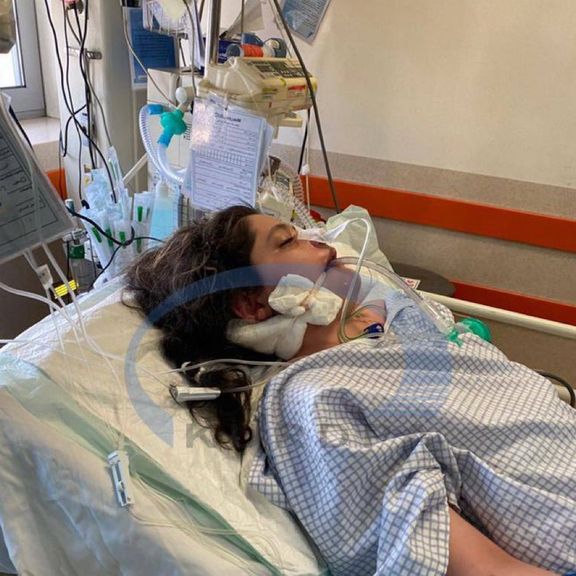
On Tuesday, the chief of Iran’s Judiciary Mohsen Ejei tried to argue that Mahsa Amini was arrested in full public view. However, by all indications, she was hit in the head after she was pushed into a police van where there were no witnesses, or none that has dared to speak out.
One eyewitness who spoke with Amini in the police station told Iran International September 26 that she was complaining of pain in the head before she passed out and taken to hospital, where she arrived in a coma.
The most incredible, however, claim came from an ‘analyst’ on Iran-backed Al Manar TV in Lebanon. While the video of his remarks exists, we could not identify him.
The TV guest said that Amini was an Israeli agent because she was a Kurd with connections to Kurdish insurgent groups fighting against the Islamic Republic. Presumably, the Kurdish groups have ties to Israel, which sent Amini to Iran “with a suicide pill” and she “walked into a police station” and used the pill to kill herself so that Iran could be blamed.
These remarks are typical of diatribe and conspiracy theories the Islamic Republic and its proxies use to try to discredit those they regard as enemies or rivals and feed ideologically convenient disinformation to their followers.
Iranian President Ebrahim Raisi, Foreign Minister Hossein Amir-Abdollahian and even Supreme Leader Ali Khamenei have insisted that the government is investigating Amini’s death. But after three weeks, no official has been named as responsible for her arrest and transfer to the police station. No police officer has been suspended or arrested, while officials act expeditiously against critics and quickly “identify” anti-regime "lawbreakers," such as journalists and activists.
In order to build a narrative of foreign engendered protests, Iranian state media on Thursday released a trailer of an apparently longer program featuring forced confessions of Cécile Kohler, an educator who heads the teachers’ union National Federation of Education, Culture and Vocational Training (FNEC FP-FO) and her husband Jacque Paris.
In the short clip, they say they are agents of the French intelligence service, and were sent to Iran to prepare grounds for riots. State TV said the two French citizens had entered Iran with "chunks of money ... which was meant to fund strikes and demonstrations." "Our goal at the French security service is to pressure the government of Iran," said Paris in the video.
The French Foreign Ministry categorically denied that the two citizens were intelligence agents, saying it will do its utmost to secure their release.
Iran's Intelligence Ministry announced the detention of the two in May, alleging that they met with members of the Coordination Council of Iranian Teachers’ Trade Associations, which has been the organizer of several rounds of nationwide protests since last year.
According to information obtained by Iran International, the couple arrived in Tehran's on April 29 and stayed for two days, followed by visits to Kashan and Esfahan. They were returning to Paris .
Their trip coincided with intensification of Iran’s crackdown on teachers’ protests and union activists over their rallies on May 1, the international Labor Day.